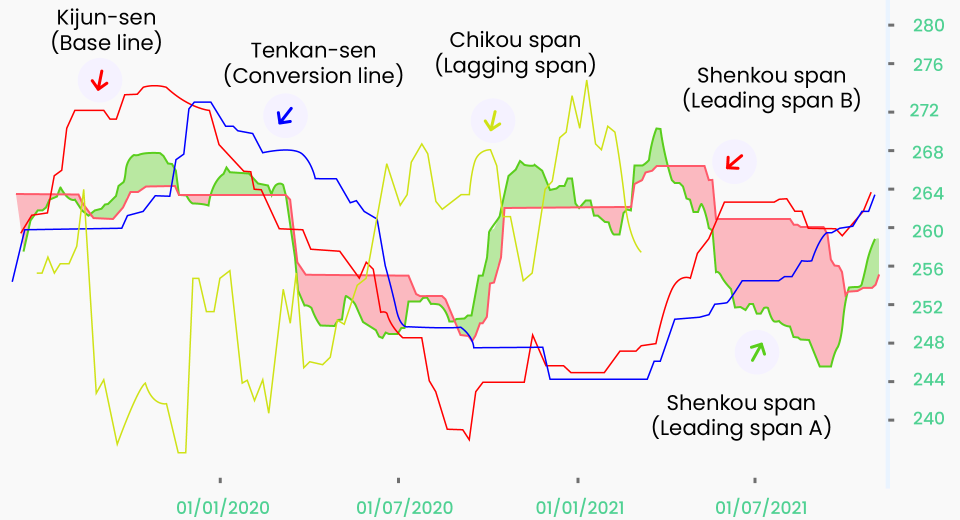Crude oil is the most actively traded commodity worldwide, which ensures high liquidity in this market. The global crude oil market size is expected to reach $3481.5 billion, exhibiting a CAGR of 4.6% between 2023 and 2027. Commodity trading helps in hedging portfolios for Black Swan events like the Covid-19 pandemic, which led to a huge decline in demand due to the stay-at-home orders. Derivatives, such as CFDs, are a great way to begin trading without needing to own the underlying asset. Read this guide to learn the basics of oil trading.
Since crude oil is a non-renewable source of energy and is continually in high demand, its price tends to be highly volatile. Therefore, trading crude oil offers many opportunities and can accommodate any style of trading. When trading commodities, especially oil, fundamental analysis is as critical as technical analysis.
Fundamental Analysis: Know the Factors That Affect Crude Oil Prices
A few of the most impactful fundamentals that drive the price of crude oil are:
Supply
Like any commodity, the price of oil declines when supply outpaces demand. The Organization of the Petroleum Exporting Countries (OPEC) controls the supply of crude oil to maintain a demand-supply balance and prevent dramatic price fluctuations. This was evident amid the Russia-Ukraine conflict, where Russia, the largest oil supplier in the region disrupted the supply chain and domestically consuming most of the produce. As a result, the price of oil and oil-based products rose between 50% and 100% across Europe. So, experienced traders will keep an eye on the monthly OPEC reports and news from the largest oil suppliers to stay updated on the status of oil supply. This is necessary for swing traders, as they hold their positions for a few weeks.
Demand
Oil prices are directly correlated to demand. If demand decreases while supply remains steady, oil prices decline. We’ve already talked about this earlier, when the Covid 19 pandemic reduced demand and affected oil prices. Due to excessive production, oil prices turned negative in 2020! This forced the OPEC to cut production to maintain the supply-demand balance. The GDP reports of the US and oil-producing countries, and the PMI of larger economies can help traders stay updated on oil demand.
Economic Growth
Since the world relies on oil and oil products for most of its energy needs, growth in an economy drives demand from industries such as transportation, manufacturing and pharmaceuticals, which pushes oil prices up. Simultaneously, a decline in the pace of economic growth exerts downward pressure on oil prices. For instance, oil prices declined during the last week of March and April 2023 as recessionary fears resurfaced due to the banking crisis in the US.
Alternative Sources of Energy
Climate change and drying up of oil reserves have been pushing the need for alternative energy sources. Further, governments are incentivising businesses and citizens to adopt renewable energy. Any positive research or advancement in the usability of alternative sources hurts oil, causing the price to dip.
Oil Storage
Since oil is a necessity, most governments and enterprises maintain massive stores of the commodity to meet the demand in case the supply chain is disrupted. When the storage is being loaded, oil prices rise. However, during surplus supply, when the storage facilities are at full capacity, the price of oil declines.
US Dollar
Like all commodities, oil is also traded in the USD. This black gold has a direct relationship with the greenback. Therefore, if other currencies are falling when the dollar is rising, purchasing oil becomes more expensive for countries with declining currencies.
Technical Analysis: Top Indicators for Trading Crude Oil
Most technical indicators used for studying oil price movements are lagging indicators. Nevertheless, they help traders interpret market conditions and thereby movements in oil prices. The most commonly used technical indicators for oil trading are:
Trend Indicators
Traders use moving averages to predict the direction of the price trend. A common strategy is to use two EMAs. A slower, 100-day EMA, and a faster, 50-day EMA. When the faster EMA line falls below the slower one, it is a signal of a bearish market and the potential for a downtrend to set in. When the faster EMA line crosses above the slower one, an uptrend is expected.
Trend lines as well as candlestick patterns also help in determining trends in oil prices.
Momentum Oscillators
These help in determining whether crude oil is oversold or overbought. Traders popularly use the RSI to evaluate whether oil is overbought or oversold. It helps determine whether the trend will continue or reverse. Other popular oscillators include the MACD and Stochastic Oscillator. Oscillators help in identifying reversal and exhaustion points and quantifying the short-term strength of a trend. For instance, when RSI is less than 30, it indicates that the asset is oversold and when the indicator value is over 70, it indicates that the asset is overbought.
Support and Resistance Level Indicators
Support and resistance levels help in identifying the price points at which market action may take place. Indicators such as Bollinger Bands and Fibonacci levels help in defining the support and resistance levels. These levels serve as points of inflection or breakout to help traders make entry and exit decisions.
Support and resistance levels indicate the price points where action needs to be taken to make the most of trading opportunities.
Oil traders combine trend, momentum and strength indicators to make trading decisions. For instance, during an uptrend, if oil is oversold, declining momentum indicates an impending price correction and reversal in trend, thus signalling traders to open a short position.
To Sum Up
- Oil is the most commonly traded commodity globally.
- CFD trading allows traders to gain exposure to the crude oil market without owning the commodity.
- Both fundamental and technical analyses are critical to oil trading.
- Fundamentals to look for oil trading are oil demand and supply, the strength of the USD, economic growth, the status of oil stores and progress in alternative sources of energy.
Traders use a combination of technical indicators to gauge the momentum, strength, and critical price points to speculate on oil prices and take positions.
Disclaimer:
All data, information and materials are published and provided “as is” solely for informational purposes only, and is not intended nor should be considered, in any way, as investment advice, recommendations, and/or suggestions for performing any actions with financial instruments. The information and opinions presented do not take into account any particular individual’s investment objectives, financial situation or needs, and hence does not constitute as an advice or a recommendation with respect to any investment product. All investors should seek advice from certified financial advisors based on their unique situation before making any investment decisions in accordance to their personal risk appetite. Blackwell Global endeavours to ensure that the information provided is complete and correct, but make no representation as to the actuality, accuracy or completeness of the information. Information, data and opinions may change without notice and Blackwell Global is not obliged to update on the changes. The opinions and views expressed are solely those of the authors and analysts and do not necessarily represent that of Blackwell Global or its management, shareholders, and affiliates. Any projections or views of the market provided may not prove to be accurate. Past performance is not necessarily an indicative of future performance. Blackwell Global assumes no liability for any loss arising directly or indirectly from use of or reliance on such information herein contained. Reproduction of this information, in whole or in part, is not permitted.





